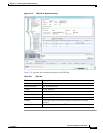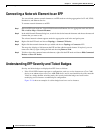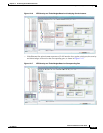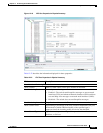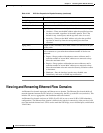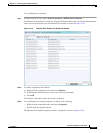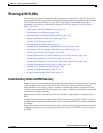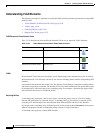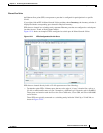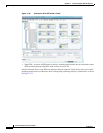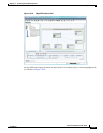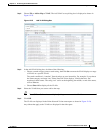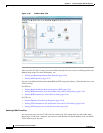
12-45
Cisco Prime Network 4.0 User Guide
OL-29343-01
Chapter 12 Monitoring Carrier Ethernet Services
Working with VLANs
Working with VLANs
The following topics provide information and procedures for working with VLANs. The Vision GUI
client supports a VLAN overlay which, when applied, highlights the network elements and links that a
VLAN (and its associated VLANs) traverse. The overlay displays STP and REP link and port
information. Using overlays is described in Displaying VLANs By Applying VLAN Overlays to a
Map45, page 12-61.
• Understanding VLAN and EFD Discovery, page 12-45
• Understanding VLAN Elements, page 12-46
• Switching Entities Containing Termination Points, page 12-50
• Adding and Removing VLANs from a Map, page 12-50
• Viewing VLAN Mappings, page 12-53
• Working with Associated VLANs, page 12-55
• Viewing VLAN Links Between VLAN Elements and Devices, page 12-58
• Displaying VLANs By Applying VLAN Overlays to a Map45, page 12-61
• Viewing VLAN Service Link Properties, page 12-63
• Viewing REP Information in VLAN Domain Views and VLAN Overlays, page 12-63
• Viewing REP Properties for VLAN Service Links, page 12-64
• Viewing STP Information in VLAN Domain Views and VLAN Overlays, page 12-66
• Viewing STP Properties for VLAN Service Links, page 12-67
• Viewing VLAN Trunk Group Properties, page 12-68
• Viewing VLAN Bridge Properties, page 12-70
• Using Commands to Work With VLANs, page 12-72
Understanding VLAN and EFD Discovery
When you start the Prime Network gateway the first time, Prime Network Vision waits for two topology
cycles to complete before discovering new VLANs, VLAN associations, and EFDs. The default
configured time for two topology cycles to complete is one hour, but might be configured for longer
periods of time on large setups. This delay allows the system to stabilize, and provides the time needed
to model devices and discover links.
During this delay, Prime Network Vision does not add VNEs or apply updates to existing VLANs or
EFDs.
After the initial delay has passed, Prime Network Vision discovers new VLANs, VLAN associations,
and EFDs, applies updates to existing VLANs, VLAN associations, and EFDs, and updates the database
accordingly.
When you restart the gateway, Prime Network Vision uses the persisted topology information instead of
waiting two topology cycles, thus improving the discovery time for new VLANs, VLAN associations,
and EFDs.



